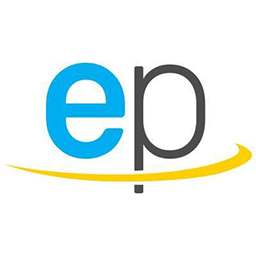Gas sensing platform for intuitive Internet-of-Things applications
24-06-2015 |
IMEC
|
New Technologies
Imec and Holst Centre have developed a small NO2 sensor featuring a low
power consumption in the mW range. The sensors have a low detection limit
for NO2 (<10 ppb) and a fast response time. They are particularly well
suited for air quality monitoring and serve as a solution to the increased
demand for accurate local air quality monitoring for indoor and outdoor
environments. The sensors are being tested in real-life situations, as part
of an environmental monitoring platform.
While wearable technology that measures body parameters has become
increasingly popular in recent years, the Intuitive Internet of Things
(I2oT) is next on the horizon: connecting everybody and everything
everywhere with data stored in the cloud, turning the massive amount of data
in information to make the right decisions, to take the right actions
exactly as we need or want. The I2oT is expected to manage the
sustainability, complexity and safety of our world. It will increase our
comfort and wellbeing in many ways.
Health issues resulting from poor air quality are a growing concern for
consumers and accurate monitoring is becoming more and more in demand, for
both outdoor and indoor environments, says Imec.
Air quality is typically measured on just a few distinct locations per city,
with specialized equipment. Many current gas sensors are large in size, have
high power consumption and are too cost prohibitive to be implemented on a
large scale for I2oT applications. Imec and Holst Centre have developed
small, simple, low-power and high-quality autonomous sensors that wirelessly
communicate with the environment and the cloud.
Imec and Holst Centre’s NO2 sensors were integrated in the Aireas air
quality network, a multiple sensor network in the city centre of Eindhoven
(the Netherlands). The purpose was to test -in actual outdoor conditions and
long term- the stability of the sensors, and benchmark them against
established reference sensors. The sensors are operational since early May
2015 and contribute with valuable outdoor sensor data since then. During
traffic rush hours, the sensors detect a significant increase of NO2
concentration up to the health safety limits.
Imec and Holst Centre are currently deploying a similar sensor network
inside the Holst Centre building in Eindhoven to test the sensors for indoor
air quality monitoring. This environmental monitoring platform today
includes a proprietary NO2 sensor and commercial sensors for temperature,
relative humidity and CO2. The measured levels can be monitored live, over
the internet. In a next step, proprietary low-cost low-power sensors will be
added for CO2, VOCs (Volatile Organic Compounds), Ozone, and particle
matter.
The generated sensor data are transferred to the cloud, stored in a database
and immediately available on (mobile) applications, explained Kathleen
Philips, director of imec’s perceptive systems for the intuitive internet of
things R&D program. “Data fusion methodology and advanced algorithms enable
us to combine data from different sensors such as temperature, several
gasses, humidity, human presence detection and to derive contextual
knowledge. This information contributes to a correct interpretation of the
situation and helps us to take adequate actions to solve the problem. In
this way, we have developed a context-aware intuitive sensing system.
Companies interested in early application validation and development for
distributed IoT networks and/or in the innovative technology and circuits to
realize them are invited to become a partner in our R&D program. IP can also
be licensed."
By Electropages
Electropages is a trusted source of news and insights from the global electronics industry. With a dedicated team of experts and editors, Electropages delivers in-depth articles, product updates, and market trends across sectors such as embedded systems, IoT, connectors, and power solutions. Our mission is to empower engineers and professionals with the knowledge they need to innovate and succeed in a rapidly evolving technological landscape.

